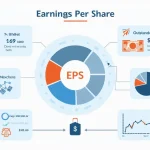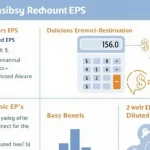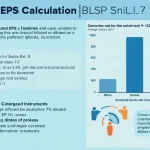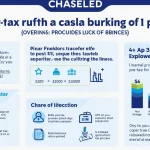Diluted Earnings Per Share Calculator
Is this tool helpful?
How to use the tool
- Net Income (USD) – type the company’s profit after tax. Examples: 1 500 000, 9 750 000.
- Weighted Average Shares Outstanding – enter average common shares during the period. Examples: 820 000, 3 600 000.
- Number of Dilutive Securities – add potential shares from options, warrants, or convertibles. Examples: 65 000, 480 000.
- Press “Calculate”; the script divides net income by the sum of weighted shares and dilutive securities, then displays Diluted EPS.
Formula used
$$ \text{Diluted EPS}= rac{\text{Net Income}}{\text{Weighted Average Shares}+\text{Dilutive Securities}} $$
Example calculations
- Scenario A: Net Income = $1 250 000; Shares = 900 000; Dilutive = 75 000.
Denominator = 975 000 → Diluted EPS = $1 250 000 / 975 000 = $1.28. - Scenario B: Net Income = $5 600 000; Shares = 2 500 000; Dilutive = 400 000.
Denominator = 2 900 000 → Diluted EPS = $5 600 000 / 2 900 000 = $1.93.
Quick-Facts
- US GAAP requires diluted EPS disclosure for publicly traded firms (FASB ASC 260-10).
- IFRS equivalent is IAS 33 “Earnings per Share” (IFRS Foundation, 2020).
- Anti-dilutive instruments are excluded from the denominator (SEC Staff Accounting Bulletin No. 98).
- Median S&P 500 share-based dilution: 2.2 % in 2022 (Equilar Shareholder Dilution Trend Report, 2023).
FAQ
What does the calculator compute?
It computes diluted earnings per share by dividing net income by total potential shares, following ASC 260 rules (FASB, 2023).
How is it different from basic EPS?
Basic EPS ignores convertibles and options, while diluted EPS assumes their conversion, giving a lower, conservative figure (Investopedia, 2023).
When do anti-dilutive securities get excluded?
If converting a security raises EPS, it is anti-dilutive and excluded, per ASC 260-10-45-17.
Can diluted EPS equal basic EPS?
Yes. If no potential shares exist or all are anti-dilutive, both metrics match (SEC Financial Reporting Manual §7200).
Is negative net income handled?
Yes. Enter a negative figure; the tool returns a negative EPS, signalling a loss per share (IAS 33.64).
What period should I use for shares outstanding?
Use the weighted average over the reporting period to reflect issuance timing accurately (Kieso et al., “Intermediate Accounting”, 2021).
Why does share-based compensation dilute EPS?
Options or RSUs convert into common stock, increasing shares and reducing earnings per share (Harvard Business Review, 2022).
Is the calculator suitable for private companies?
Yes, if you track share counts and potential dilution; however, disclosure rules may differ (AICPA Guide to Private Company Reporting, 2022).
Important Disclaimer
The calculations, results, and content provided by our tools are not guaranteed to be accurate, complete, or reliable. Users are responsible for verifying and interpreting the results. Our content and tools may contain errors, biases, or inconsistencies. We reserve the right to save inputs and outputs from our tools for the purposes of error debugging, bias identification, and performance improvement. External companies providing AI models used in our tools may also save and process data in accordance with their own policies. By using our tools, you consent to this data collection and processing. We reserve the right to limit the usage of our tools based on current usability factors. By using our tools, you acknowledge that you have read, understood, and agreed to this disclaimer. You accept the inherent risks and limitations associated with the use of our tools and services.







